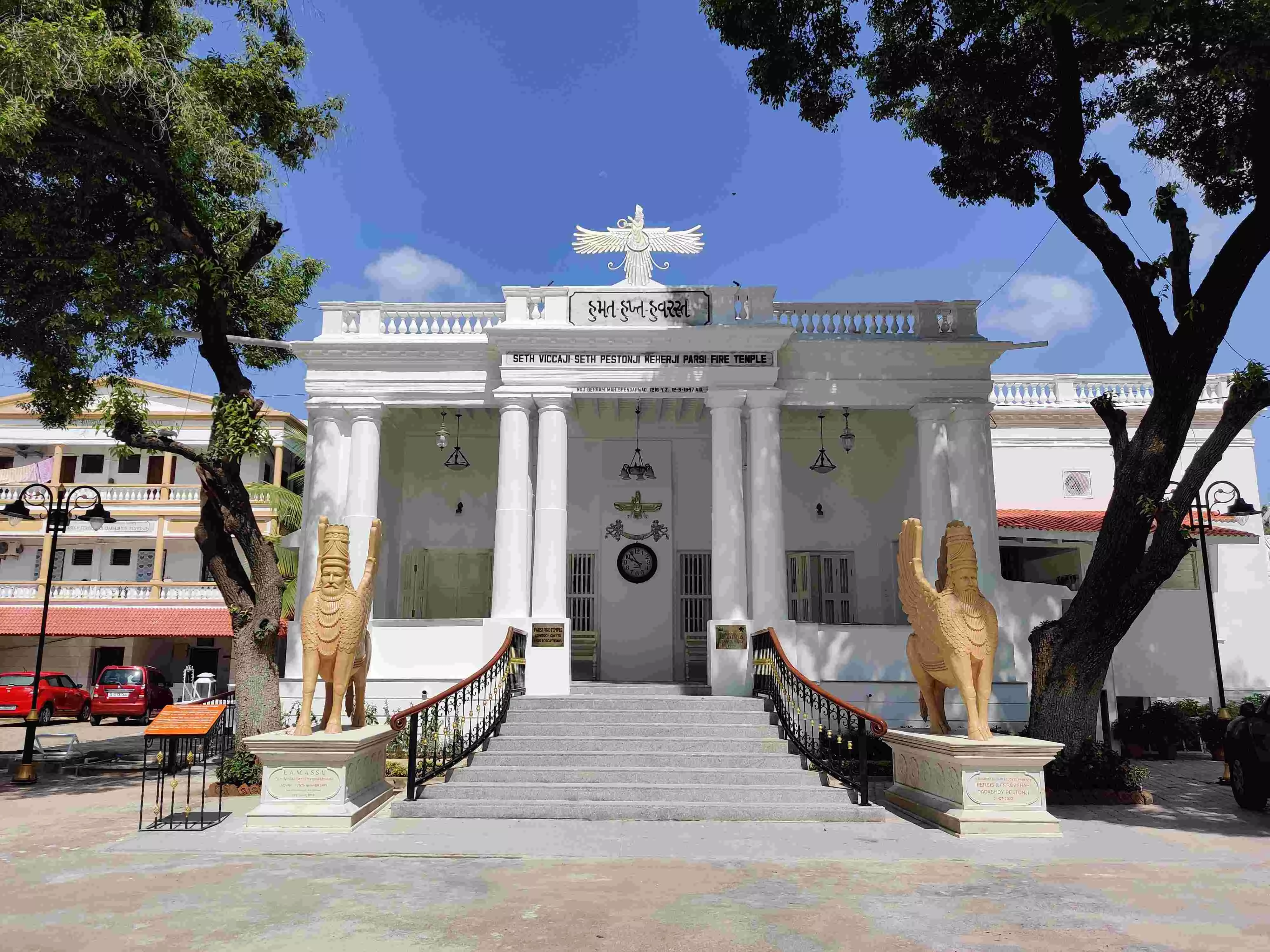South India's oldest Parsi fire temple in Hyderabad turns 175 YO
The small fire temple was built by two brothers, Seth Viccaji Meherji and Seth Pestonji Meherji, who hailed from a Parsi family, a native of Tarapore village in Gujarat's Gandhinagar.
By Amrutha Kosuru
Hyderabad: Seth Viccaji - Seth Pestonji Meherji Parsi Fire Temple, the oldest fire temple in South India, located at 128 Mahatma Gandhi Road, Secunderabad is going to turn 175 by the end of July 2022.
The Seth Viccaji - Seth Pestonji Meherji Parsi Fire Temple is celebrating its 175th Anniversary with an event spanning over two days, i.e. 30 and 31 July 2022. Head Priest Vada Dasturji Saheb Keki C Ravji Meherjirana would be leading the Jashan (prayer) on the morning of 31 July 2022.
The small fire temple was built by two brothers, Seth Viccaji Meherji and Seth Pestonji Meherji, who hailed from a Parsi family, a native of Tarapore village in Gujarat's Gandhinagar.
The two brothers built a smaller fire temple (Dadgah) for the use of local Zoroastrians residing in the area and six years later, with true faith, they built the agiary.
Kayarmin F Pestonji, President of The Old Parsi Fire Temple Trust which manages the fire temple says, "This agiary symbolizes the faith of the tiny, but vibrant Parsi Zoroastrian community of the twin cities of Hyderabad and Secunderabad. In the Holy Eternal Fire which has enabled it to be burning continuously for 175 years and with which the blessings of Almighty Ahura Mazda will continue to shine for centuries to come."
History of the temple
The bungalow of Col. Haffkine, adjacent to the fire temple, and the land around it were purchased by the Meherji brothers and given in charity for the maintenance of the agiary. The Atash Adaran (holy fire) was enthroned and consecrated on 12th September 1847. Marble plaques placed inside contain Persian couplets by Khan Bahadur Dastur Nosherwanji Jamshedji Jamaspasa and Rai Girdhari Prasad, which tell us the date of the consecration of the fire temple, 12 September 1847.
The two brothers from humble beginnings, went on to become the sole farmers of large provinces such as Northern and Southern Konkan, Poona, Sholapur, Ahmednagar and part of Khandesh. They constructed cart roads, built bridges for the speedy and safe transport of merchandise, and in short, can be said to be the pioneers of the cotton trade between the Nizam's Dominion and the Bombay Presidency.
"The brothers were even permitted to have their own initials and marks engraved on the national coins. A silver coin was struck at the Aurangabad Mint, bearing the initial letters of Viccaji's younger brother Pestonji Meherji, and widely known after him as the Pestonshahi Sicca of the Nizam Government," said Arnaz Bisney, a member of the Parsi Community.